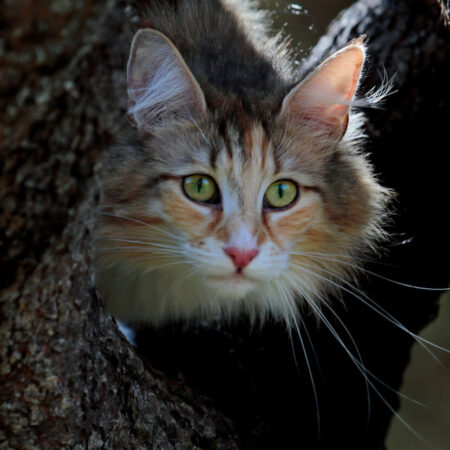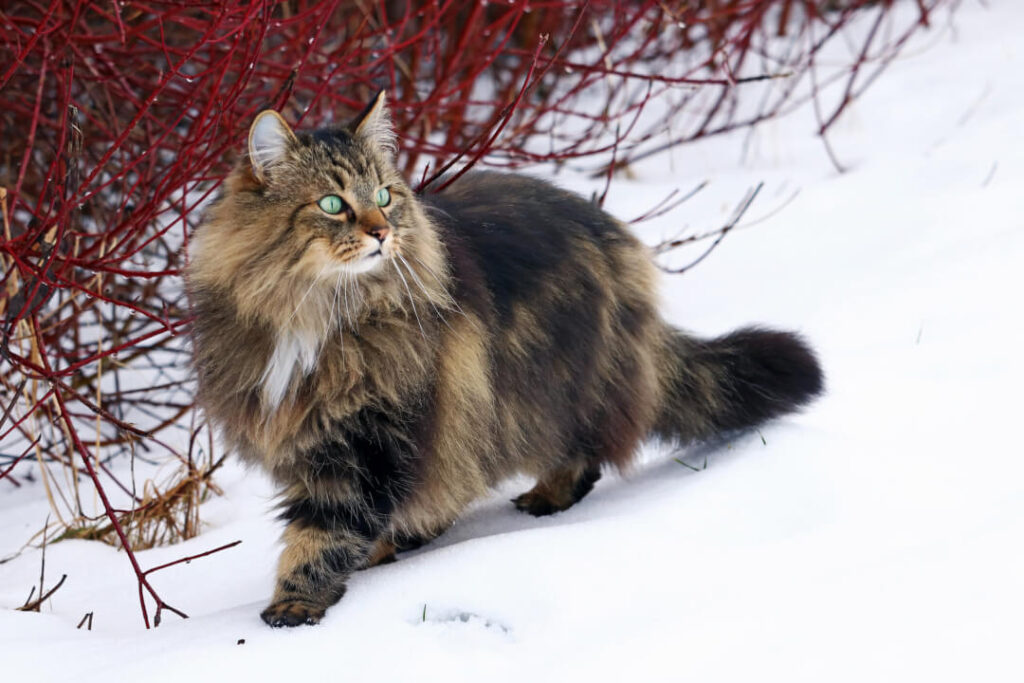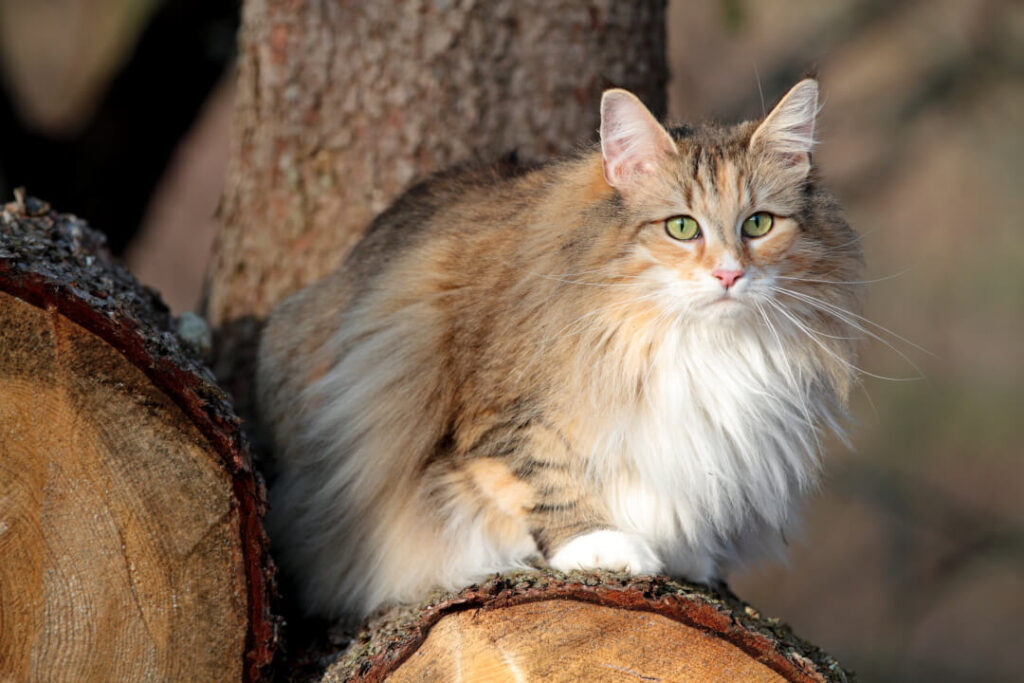
Cat breed The Norwegian Forest Cat

Profile

What is the special trait of this breed?
Norsk Skogkatt – is it a small lynx or a fox?
Whoever sees the Norwegian for the first time might think that they are being approached by a wild cat, recently eloped from the Scandinavian wilderness; the strong build, a triangular-shaped head, a short nose, relatively short paws, the long, bushy tail. Hair tufts in their ears, shining eyes and an elegant stride.
It may look wild but it is neither unsocial nor afraid of humans!
While wild cats do not like to be tamed and by nature prefer to keep their distance, the beautiful Norwegian is very affectionate and fond of humans. As a matter of fact, it actively seeks contact! And not only contact with its own species, but also with humans and other pets.
A perfect, very tolerant family cat: Both children and dogs are welcome.
Due to its social trait, the Norwegian Forest Cat causes no problems if living together with the most unlikely family members. Always given that the chemistry works and the integration is carried out in a sensitive way.
Here you can read more on the best way to do this.

What traits are unique to the Norwegian Forest Cat?
With a dense, water-repellent coat, they are perfectly fitted for the cold, northern climate: The thick under-wool, covered by a special overcoat (guard hair) protects the cats efficiently from wet and cold.
A most recognisable trait is the thick ruff – a denser part between chin and shoulder – which in winter time grows into a dominant mane. Similarly characteristic are the “ankle warmers” and “snow shoes” – a special type of hair which in winter grows between the toes and around single joints – perfect for getting around in the snow-laden forests of Norway.
The hind legs are a little longer and the paws are larger than those of other breeds – that way the Norwegian can spread its weight perfectly on the snowfields without sinking in too much.
This makes for a talented climber: Just like a squirrel, the Norwegian Forest Cat can climb down a tree head-first!